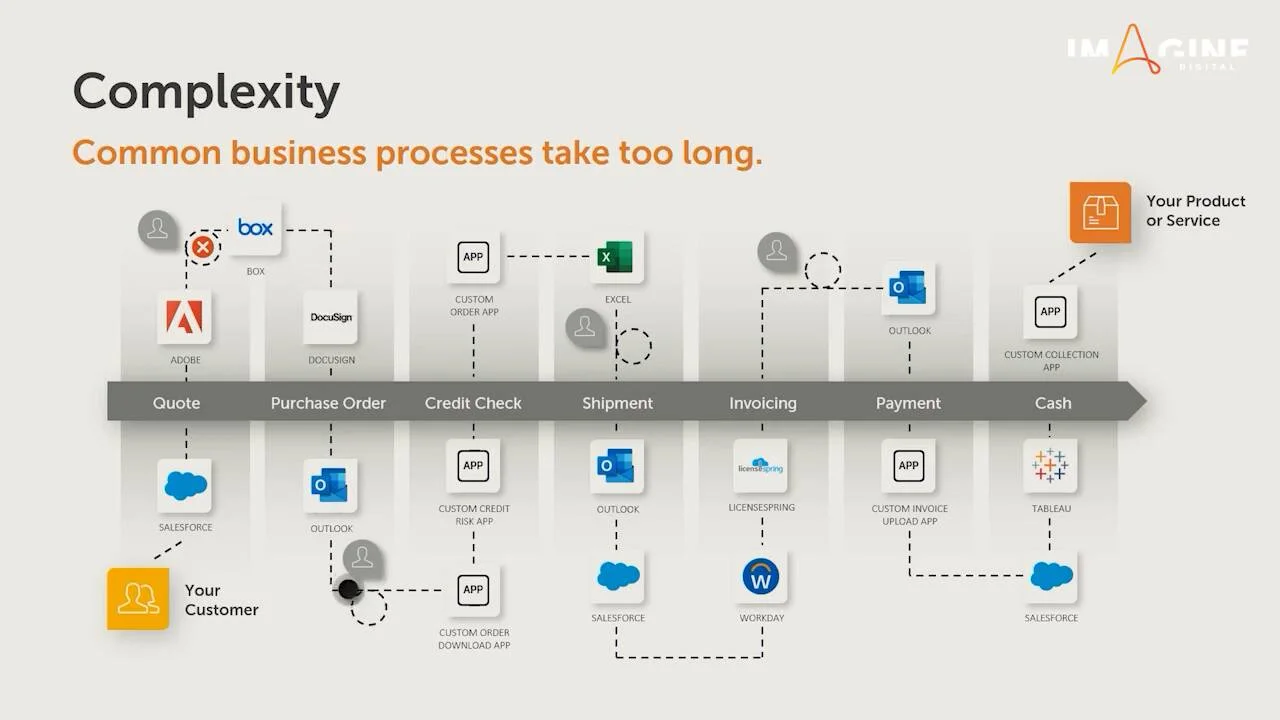Hyperautomation is a business-driven, disciplined approach that organizations use to rapidly identify, vet and automate as many business and IT processes as possible.
Hyperautomation involves the orchestrated use of multiple technologies, tools or platforms, including:
- Artificial intelligence (AI)
- Machine learning
- Event-driven software architecture
- Robotic process automation (RPA)
- Business process management (BPM) and intelligent business process management suites (iBPMS)
- Integration platform as a service (iPaaS)
- Low-code/no-code tools
- Packaged software
- Other types of decision, process and task automation tools
As a large-scale endeavor, hyperautomation requires careful planning and deliberation. At the same time, the potential upside and return-on-investment should enervate team members from across the organization; they have the opportunity to unburden teams from repetitive labor and potentially boost the success of their value-producing work.
While the goal of hyperautomation is to truly encompass all automatable processes, realistic implementation is more nuanced. A feasible hyperautomation strategy involves several key steps:
Assess budget and identify cost savings by highlighting existing automations. Workflows using RPA or other technologies can be expanded to other areas of the company in the course of the hyperautomation process.
Gather information on the existing processes that can be automated or otherwise must remain manual. Pay special attention to bottlenecks that maintain existing delays and can be improved through automation. One particularly effective technique for analysis is digital twinning, where an organization creates a virtual model of a process for deeper analysis and manipulation without affecting existing workflows.
Collect data. Automations are only as good as the data they run on, and the pipelines delivering the right data to the right place must be created alongside these machine-driven workflows. Creating a pipeline between these data stores and the automations that will use them is an essential step.
Identify automation tools. Project leaders may choose to begin by replicating one existing automation into another area of their operation, such as standardizing one automated approvals process for other decision makers. In fact, the automations themselves can be automated for more efficiency gains. It all depends on which tools and platforms are put to use throughout the project.
Predict outcomes. Automation for automation’s sake is even less effective at the enterprise-level and can lead to workers growing unclear on where their responsibilities lie. Outcome prediction involves setting the inputs for an automation, noting any hand-offs or human interventions, and predicting the results that arrive, as well as larger considerations like efficiency improvements and overall ROI.
Implement automations. AI tools can build the automations iteratively with human guidance to achieve consistent benchmarks. It’s this collaboration between machine learning and human intuition that drives successful hyperautomation endeavors, and creates clear guidance on the future of employee responsibilities.
Next Steps: Leveraging HyperautomationThe key word for hyperautomation is interoperability. A single automation can be extended to processes, while an operation that once relied mostly or entirely on manual work can be enhanced through AI tools. A single document submission, for example, may OCR to interpret the text, sentiment analysis to identifying the underlying meaning, and AI to draft model responses. Each tool individually works on its own for a wider variety of tasks, with deployment made easy by successful replication and oversight from IT. READ MORE...


